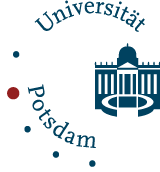Twisted Modes of Leadership in Roman Historiography of the Principate
This sub-project explores ‘twisted transfers’, i.e. Alain Testart’s ‘transfers of the third type’ (T3T), in relation to the transition of political power in the Roman principate. Distinct from gifts and commercial or economic exchanges, underpinning T3T is an unequal balance of power – for example, we pay our taxes, but whether those taxes are used for the purposes we expect is out of our control. ‘Twisted’ modes of leadership (e.g. corruption and embezzlement) and, more generally, ‘twisted’ forms of T3T are not only ascribed, in the Roman Empire, to the obviously ‘tyrannical’ rulers such as Caligula or Nero. Rather, rooted at the very core of the principate is the idea of the corruption of previous ideals and norms. Part of the representation of this ‘degenerative corruption’ is also the reference to forms of twisted transfer implicit in the construction of this power: bribery, gifts and requisitions are crucial aspects of the construction of the principate according to Roman imperial historiographers, who readily stress the willingness of the senate to succumb to bribery and corruption. Such an idea is reinforced by the connected concept of the corruption of people through imperial ‘generosity’, as well as of the impoverishment of the people through the imperial centralization of power and requisition of resources.
As well as the material corruption of the population via the power of the principate, the transfer of an idea, auctoritas, to Rome’s first emperor also presents itself as a type of T3T. Augustus accrues the virtues of the republic’s exemplary figures through, e.g. the statues of the summi viri in the Augustan forum – a new kind of imperial public space. As Cicero suggests, the values that were possessed by such exempla need to be understood by means of references to the past; the power must be seen to be transferred from Roman ‘heroes’ to their successors. Augustus’ relentless pursuit of auctoritas transforms this action from the Ciceronian ideal, where the exemplary figures are not disenfranchised, to one where exempla function as accessories to the Augustan image. One of the outcomes of this sub-project will be to apply the methodology of T3T to interrogate this process.
